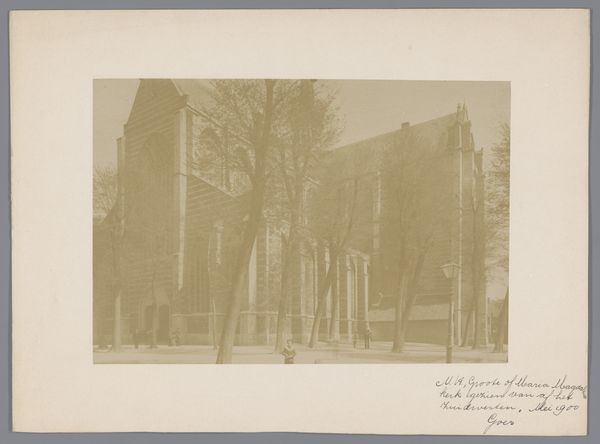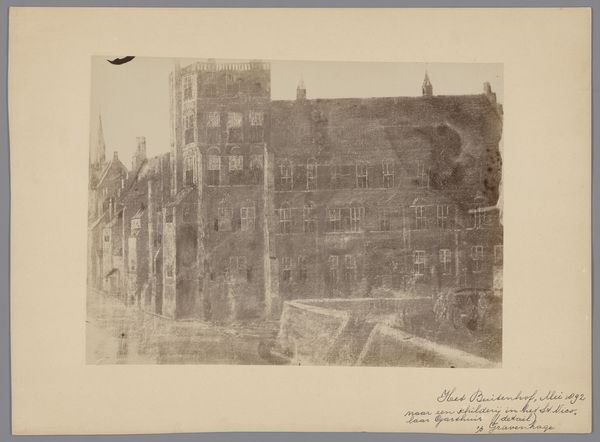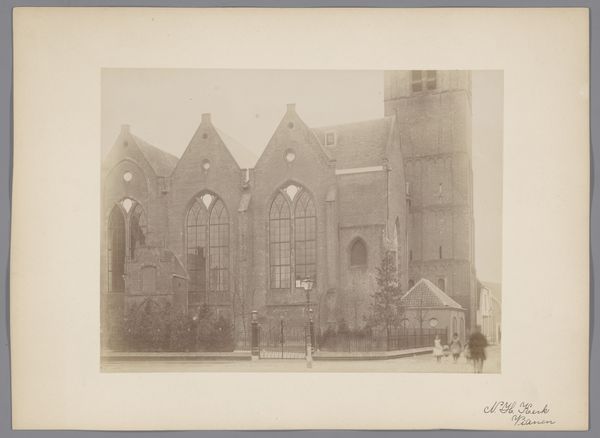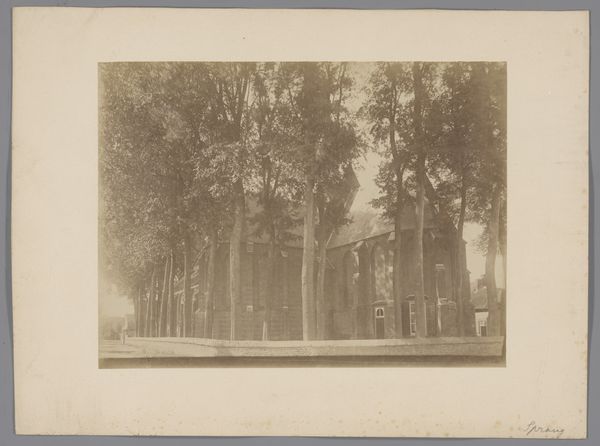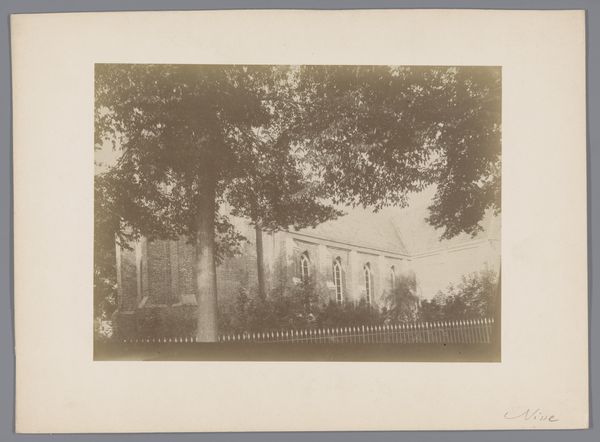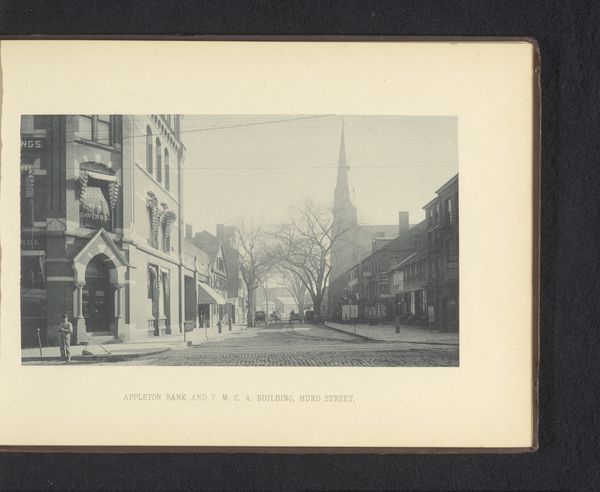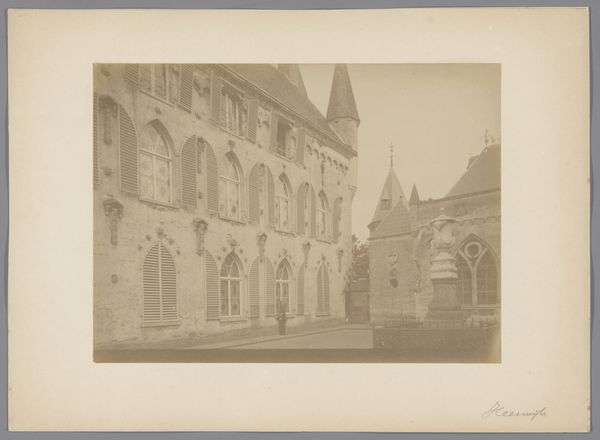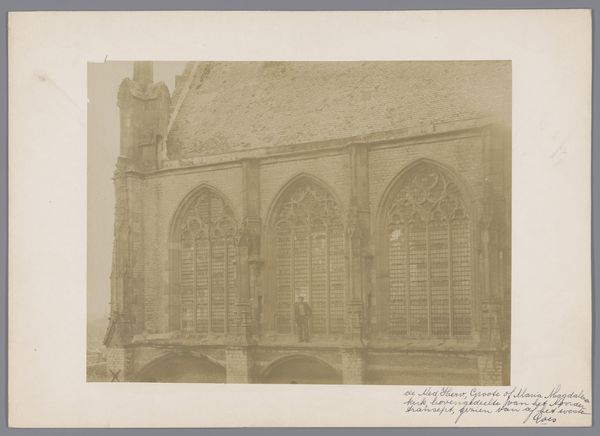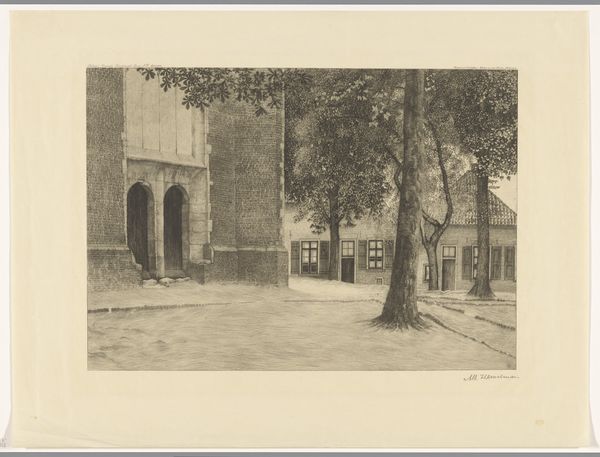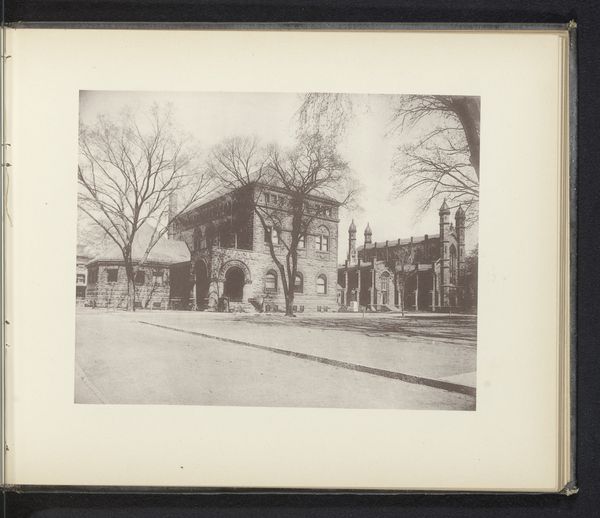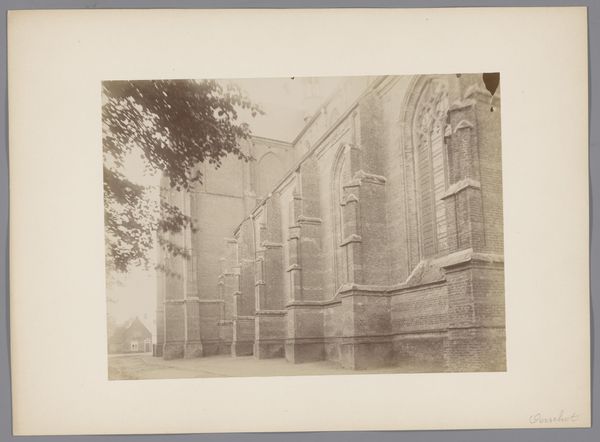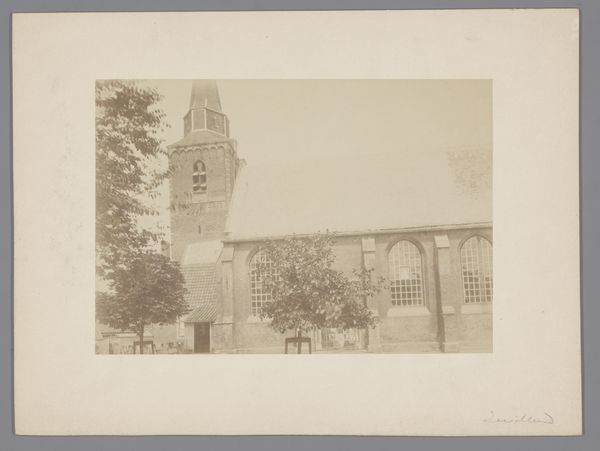
Gezicht op de Grote of Onze-Lieve-Vrouwenkerk te Dordrecht c. 1880 - 1910
0:00
0:00
Dimensions: height 170 mm, width 231 mm
Copyright: Rijks Museum: Open Domain
Curator: Immediately, I feel a sense of quiet solitude, almost melancholy emanating from this image. It’s all hushed sepia tones. Editor: This is a photograph, most likely taken sometime between 1880 and 1910, that captures a view of the Grote Kerk, or the Church of Our Lady, in Dordrecht. It's an impressive piece of architecture. Curator: Monumental, but made diminutive somehow. The positioning with the trees framing either side, almost blocking our view... it’s as if the photographer wanted to capture it at a remove, making it part of a natural landscape. I find that choice fascinating. Editor: The church itself has a fascinating history, especially within the context of the Reformation. The Dordrecht Synod, a major international conference of Reformed churches, took place here in the early 17th century and had significant political and theological repercussions for the region. This architecture comes loaded with meaning about shifting power dynamics in Dutch society. Curator: Yes, the building dominates the view as you’d expect a symbol of that magnitude to, yet the photographer presents the monumentality modestly. This approach almost democratises the symbolic dominance – which I think connects beautifully to the rising movements and reformations you mentioned. What else strikes you when considering technique? Editor: The soft focus and limited depth of field definitely lend an ethereal quality, a romantic longing, if I dare use such a term. It’s bathed in a delicate light; you see how that mutes all the sharp lines, creating this rather harmonious, even dreamlike atmosphere. Curator: I do wonder about the absence of people. Their omission seems pointed—emphasizing the structures, the institutions and perhaps even ideologies that form society in the absence of those that comprise it. That deliberate quietness seems as potent as if they were present. Editor: And maybe it reveals the transience of human experience in contrast to the perceived permanence of such structures. Thinking about art, history, architecture, society all meeting each other makes my mind really whirl! It shows me there's always more than one angle from which to view anything and more stories waiting to be uncovered, right? Curator: Precisely. This visual record leaves space for considering how shifts of power can so often quietly ripple. Thank you.
Comments
No comments
Be the first to comment and join the conversation on the ultimate creative platform.
